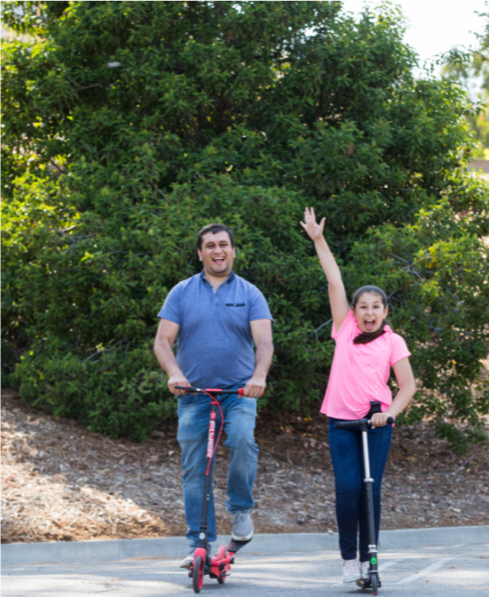Diabetes and sports
Successful diabetes management calls for a multi-faceted approach. Beyond meal planning and medication, regular physical activity can also provide benefits. Though diabetes requires some lifestyle adjustments, people with diabetes can enjoy playing sports and engaging in other forms of exercise.
Regular exercise has been shown to improve overall health and even increase insulin sensitivity. For this reason, it is recommended that all people with diabetes get some form of exercise,1 in consultation with their healthcare provider. It is important that each person with diabetes exercise at a level that is right for them. With the right precautions and medical guidance, even intense exercise can be beneficial for people living with diabetes.
Different sports have different effects

Not all sports will have the same health impact on people with diabetes. For example, sustained jogging or running can reliably lower blood glucose (BG) levels. It can also be a good way to keep body weight in a healthy range.
Here are some common activities or sports and some potential ways to help manage blood sugars. As always, check with your healthcare provider before starting any new exercise routine.
- Basketball: Though the stop-and-start nature of this sport can be tricky for glucose management, the right planning can make it possible. Keep an eye on glucose levels and consume carbs to avoid lows. Some people can also see a quick rise in glucose levels from adrenaline during a game or practice.
- Cycling: Longer rides can cause blood sugar to fall quickly, but consuming food at measured intervals can make cycling a viable sport for people with diabetes.
- Golf: This low-intensity sport can be good because it can involve lots of walking and offers time to treat low blood sugars between holes.
- Hiking: Hiking can be a great physical activity for people with diabetes, since pace can be controlled. Be sure to monitor glucose levels and have plenty of snacks to treat any potential low blood sugars.
- Swimming: By working the upper and lower body at the same time, swimming can be a great workout for anyone! It’s also great for people who have painful or tingling feet from diabetic neuropathy.2
Preparation is key
To maintain a healthy lifestyle, people with diabetes must take certain precautions before any physical activity and especially strenuous activities. Insulin requires careful monitoring of glucose levels. Regular checking of your glucose levels around periods of exercise is critical to understanding how it is impacting your health and glucose readings.
Avoiding hypoglycemia
To avoid hypoglycemia, consuming carbohydrates before, during, and/or after activity may be necessary, so always be prepared. The amount of carbs taken will depend on many factors including activity type, duration, intensity, active insulin, and starting sugar levels3. Snacking before a workout can still be helpful depending on a person's starting glucose level. Consuming carbohydrates during a workout can be another strategy to help avoid lows. Of course, for any endurance activity, fueling the body with carbohydrates not only helps avoiding lows, but also with nourishing the muscles.
Additional tips
The following strategies can be helpful for those taking insulin:

- Consider exercise and insulin timing: If working out while meal insulin is peaking (within the first 1-2 hours after giving insulin), glucose levels could fall faster than accustomed. Whenever possible, try exercising before eating or 3-4 hours after giving insulin. If this is difficult due to schedules, eating extra carbs during exercise may help.
- Know your insulin sensitivity related to the time of day: Some people notice that they are more sensitive to insulin and exercise later in the day, compared to the morning.
- Learn how your body responds to your activity: Knowing a person's typical glucose response to activities can be helpful for planning. For example, a run may require consuming carbohydrates, whereas a yoga class or strength training might not require any additional planning or action. It all depends on a person's individual needs.
- Pay attention to sugar levels after exercise: Some people experience lows after exercise. Each person should do their research on food and drinks, and insulin taken earlier to figure out how to avoid lows from coming on.
It is also a good idea to work out with a friend or partner for your own safety.
You should always consult with your doctor prior to beginning any exercise regimen. With the right preparation and vigilance, people with diabetes can enjoy and excel in sports.
2. Swimming. The Global Diabetes Page. https://www.diabetes.co.uk/sport/swimming.html. Accessed 12AUG2021
3. Blood Glucose and Exercise. The American Diabetes Association Page. https://www.diabetes.org/healthy-living/fitness/getting-started-safely/blood-glucose-and-exercise. Accessed 12AUG2021
Looking for more tips? Join the list
Subscribe to our newsletter, News to Infuse, and receive monthly diabetes tips and helpful information.